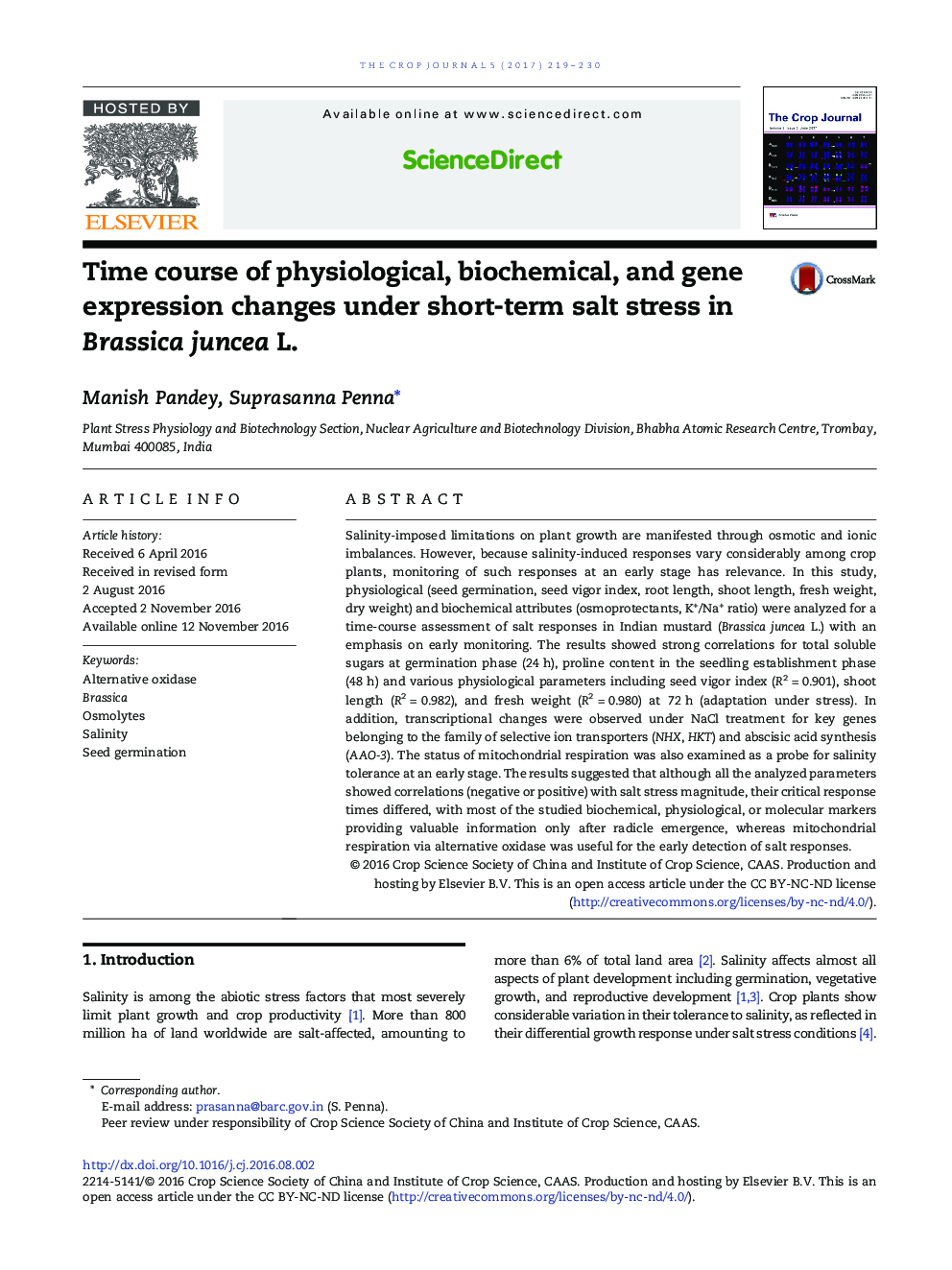| Article ID | Journal | Published Year | Pages | File Type |
|---|---|---|---|---|
| 5520779 | The Crop Journal | 2017 | 12 Pages |
Salinity-imposed limitations on plant growth are manifested through osmotic and ionic imbalances. However, because salinity-induced responses vary considerably among crop plants, monitoring of such responses at an early stage has relevance. In this study, physiological (seed germination, seed vigor index, root length, shoot length, fresh weight, dry weight) and biochemical attributes (osmoprotectants, K+/Na+ ratio) were analyzed for a time-course assessment of salt responses in Indian mustard (Brassica juncea L.) with an emphasis on early monitoring. The results showed strong correlations for total soluble sugars at germination phase (24Â h), proline content in the seedling establishment phase (48Â h) and various physiological parameters including seed vigor index (R2Â =Â 0.901), shoot length (R2Â =Â 0.982), and fresh weight (R2Â =Â 0.980) at 72Â h (adaptation under stress). In addition, transcriptional changes were observed under NaCl treatment for key genes belonging to the family of selective ion transporters (NHX, HKT) and abscisic acid synthesis (AAO-3). The status of mitochondrial respiration was also examined as a probe for salinity tolerance at an early stage. The results suggested that although all the analyzed parameters showed correlations (negative or positive) with salt stress magnitude, their critical response times differed, with most of the studied biochemical, physiological, or molecular markers providing valuable information only after radicle emergence, whereas mitochondrial respiration via alternative oxidase was useful for the early detection of salt responses.
